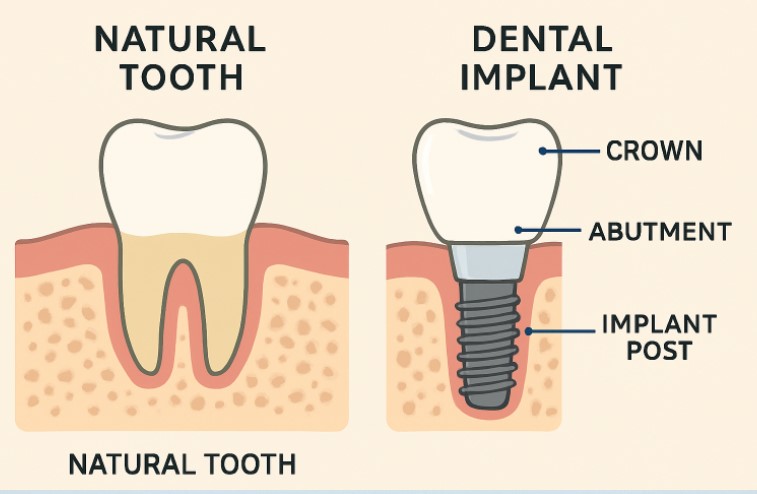Introduction
Living with missing teeth can impact your ability to eat and speak, your self-esteem, and overall quality of life. That’s why more people are turning to dental implants for a solution that combines natural appearance, functionality, and permanence. Understanding the process and the options available is essential for those considering this life-changing procedure. For a region-specific perspective on costs and planning, learn more about full mouth dental implant cost Dallas TX.
Unlike removable dentures and bridges, dental implants are designed to mimic the function and appearance of natural teeth, making them a preferred choice for many patients and clinicians. As the field of implant dentistry evolves, newer methods and advanced technologies are improving results and accessibility for patients of all ages.
Modern dentistry goes beyond aesthetics; it strives for lasting oral health and comfort by providing patients with tooth replacement solutions tailored to their individual needs. The journey to a healthy, confident smile often begins with understanding how dental implants work and what makes them different from other solutions.
Contents
What Are Dental Implants?
Dental implants are artificial tooth roots, most often crafted from biocompatible titanium. Surgically placed into the jawbone, these posts provide a stable and long-lasting foundation for prosthetic teeth. Once placed, the implant itself is not visible; what you see is the custom crown or bridge secured on top, seamlessly blending with your smile.
The implant procedure is designed to replicate the natural strength and feel of real teeth, minimizing the risk of slippage or discomfort that can come with dentures. Because each patient’s mouth is unique, dental professionals customize implant solutions in shape, size, and color to achieve the most natural look.
Benefits of Dental Implants
- Durability: Dental implants, with good oral care, can last decades or even a lifetime, significantly outlasting other tooth replacement options.
- Improved Oral Health: Since implants don’t depend on adjacent teeth for support, the natural teeth remain intact, preserving overall oral health and strength.
- Enhanced Comfort and Speech: Unlike traditional dentures that can slip or cause irritation, implants are fixed and secure, allowing for more natural speech and eating habits.
- Natural Appearance: Implants are crafted to match your natural teeth in color, shape, and size — effectively restoring your smile and self-confidence.
The Implant Procedure
Getting dental implants typically involves several well-defined steps to ensure optimal function and aesthetics:
- Initial Consultation: The dentist evaluates oral health, bone density, and implant suitability. This may include advanced imaging for detailed jawbone analysis.
- Surgical Placement: The titanium post is inserted into the jawbone under local anesthesia, forming the stable anchor for the replacement tooth.
- Healing Period: Known as osseointegration, this stage allows the implant to fuse with the jawbone over several months, creating a powerful base.
- Abutment Placement: After healing, a small connector (abutment) is fixed atop the implant to support the artificial tooth.
- Crown Placement: Finally, a custom-made crown is secured to the abutment, restoring full function and a natural look to the smile.
The careful planning and skilled execution required at each stage make patient selection and adherence to best practices critically important, as emphasized by the Mayo Clinic.
Technological Advancements in Implant Dentistry
In recent years, dental implantology has been transformed by cutting-edge technologies. 3D imaging and digital scanning enable clinicians to plan implant placement with remarkable precision, accounting for the patient’s unique jaw structure and nerve locations. This not only increases success rates but also shortens procedure time and recovery.
- 3D Imaging and Digital Scanning: Ensure accurate mapping and minimize surgical errors.
- Computer-Guided Surgery: Software-generated guides help dentists place implants with pinpoint accuracy, which can be especially important in complex or full-mouth cases.
These advancements deliver better predictability and patient outcomes, even in cases with significant bone loss or anatomical challenges.
Cost Considerations
While dental implants demand a higher initial investment than other tooth replacement options, their longevity often makes them more cost-effective in the long run. The total price can vary based on the number of implants required, necessity for bone grafting, and the complexity of the case. Many patients find that the improved comfort and durability of implants justify their cost compared to the maintenance needs of bridges or dentures. It is always best to consult with an experienced provider to receive a personalized estimate and review payment or financing options.
Choosing the Right Dental Professional
Success with dental implants hinges on selecting the right dental provider — one who combines training in implant dentistry with proven clinical experience. Always check for credentials, additional training certifications, and positive feedback from previous patients. Exploring specialty associations, such as the American Academy of Implant Dentistry, can provide additional guidance and peace of mind when making your choice.
Conclusion
Dental implants are revolutionizing the way we approach tooth replacement, blending modern technology with time-tested dental practice. By offering a solution that matches the aesthetics, comfort, and stability of natural teeth, implants restore more than just smiles — they restore confidence and improve lives. With advances making procedures safer and more accessible, and as awareness grows, more patients are discovering the lasting benefits that dental implants can provide.

